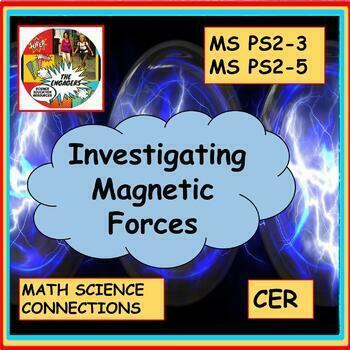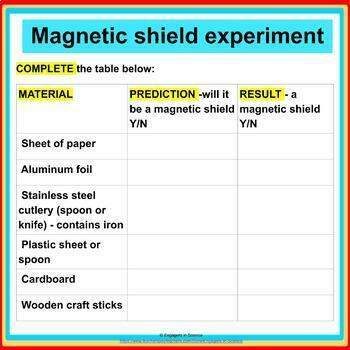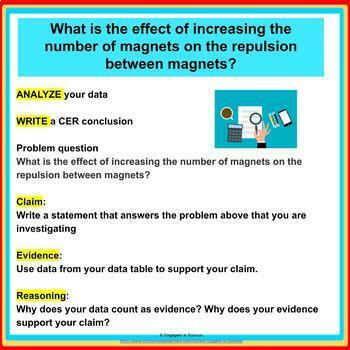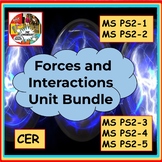Investigating magnetic forces NGSS MS-PS2-3 MS-PS2-5 CER
- Google Drive™ folder

What educators are saying
Also included in
- This bundle includes everything you need to teach an NGSS aligned middle school forces and interactions unit. These highly engaging lessons align with the philosophy of the NGSS, including a focus on deeper understanding of content as well as application of content, student performance expectations,Price $23.00Original Price $29.00Save $6.00
Description
This engaging unit (GOOGLE and PDF versions) allows students to develop an understanding of magnetic forces and their effects, the relationship between magnetism and electricity, and how useful magnets are in our lives.
The lessons fully support the NGSS standards MS PS2-3 and MS PS2-5.
These lessons are introduced with an anchor phenomenon which is revisited frequently during the unit.
In this unit, these key questions are investigated:
What materials are magnets made of?
What materials are attracted by magnets?
Can we magnetize materials and why is this possible?
What causes the Earth’s magnetic fields?
What is a magnetic shield and what materials function as magnetic shields?
What is a magnetic field and how can we detect it?
What are the differences in the magnetic fields between magnets that show attraction and magnets that show repulsion?
How can we make a simple compass?
How do we know that the geographic north pole is actually the south magnetic pole?
What is the relationship between electricity and magnetism?
What are the uses of magnets?
Students will complete stations, labs, active readings, and summaries in order to answer the above questions.
Students will be designing and performing their experiments, collecting data, and analyzing the data to see the relationship between increasing the number of magnets on the repulsion between magnets.
They will use the CER (claim, evidence, reasoning) structure to write their conclusions.
Students will ask a question that they can test about a factor that may change the strength of an electromagnet. They will design and perform their experiment, collect and analyze the data, in order to answer this question.
They will use the CER (claim, evidence, reasoning) structure to write their conclusions.
Answers (when appropriate) are given in the detailed teacher notes, and a rubric is included.
The Science and Engineering Practices below are incorporated in these lessons:
Planning and carrying out investigations.
Asking questions and defining problems.
Analyzing and interpreting data.
Engaging in argument from evidence.
The NGSS Cross Cutting Concept is incorporated in these lessons:
Cause and effect - Cause and effect relationships may be used to predict phenomena in natural or designed systems.
Included in this resource:
Teacher slides (57 slides)
Detailed teacher notes (32 pages)
Printable student worksheets with activity instructions (20 pages)
You may also like:
A unit on gravitational forces MS PS2-4 CER
Investigations into balanced and unbalanced forces MS PS2-2 CER
Investigating Newton's First Law of Motion MS PS2-2
Investigating Newton’s Second Law NGSS MS PS2-2 CER
Investigating Newton's Third Law of Motion MS PS2-1
Constructing a space station that can withstand a collision: STEM MS PS2-1
Kinetic energy, mass, and speed investigations NGSS MS PS3-1 CER
Investigating Potential Energy and Energy Transfer NGSS MS PS3-2 CER
Don't forget to give a review for this resource to earn TPT credits towards future purchases!
Also, FOLLOW US to be notified when new products are added!
Email any questions you have with subject line “Magnetism unit” to us at engagersinscience@gmail.com and we’ll be happy to answer them
Other teaching resources for sale in our Teachers Pay Teachers store can be accessed by using the link below:
Click here to access our products






